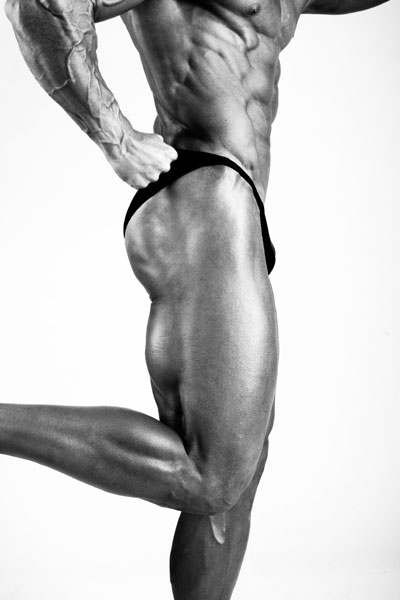 Overview
Overview
We all know that arm curls work the biceps and bench press exercises predominantly stress the chest, but how do you build the calf muscles? Many people are skipping the gym and turning to calf implants instead. Calf augmentation surgery makes the region of the gastrocnemius muscle (the muscle in the lower leg above the ankle) appear larger. Thus when the rest of the muscles have attained a certain level of development, the lower legs will not look scrawny by comparison.
The most common method of calf augmentation is the use of a calf implant. The materials used in calf implants are usually either silicone rubber blocks or silicone gel calf implants; however several types of material and shapes have been tried over the years.
The issue is that the gastrocnemius muscle is not a simple shape. On the contrary, the calf muscle is irregularly shaped and even tends to change its shape when flexed. Therefore the challenge of a calf implant is to mimic the shape of the natural muscle as much as possible.
Are calf implants right for you?
While bodybuilders are at the front of the line for calf implants, there are several reasons that cosmetic surgeons hesitate to perform calf augmentation on these patients. In contrast to other cosmetic augmentations, calf implant surgery is performed relatively infrequently.
Therefore some of the complications of calf augmentation have not been fully worked out. The risk to the patient having calf implant surgery is higher than it would be for a patient having a breast augmentation, for example.
Moreover, bodybuilders will usually continue weight training after surgery, which puts enormous strain on the implant and the surrounding tissue. This could cause the implant to shift or deform. The final, related consideration is the size of the calf implants that bodybuilders request.
Since the rest of the body has been bulked up with weights, they generally ask for very large implants to stay in proportion to the rest of the body. This larger calf implant size increases the risk for later complications like displacement, rupture or even more serious conditions like compartment syndrome.
Other than bodybuilders, there are many patients with various medical conditions that request calf augmentation. Some inborn genetic abnormalities like spina bifida and cerebral palsy can prevent the calf muscles from developing normally. Another condition that may cause relatively small or underdeveloped calf muscles are scleroderma.
Likewise, a patient that has sustained significant trauma to the nerves or muscles of the leg may be forced to watch the affected leg atrophy and wither. In these cases, calf implants are still cosmetic, but the perceived defect is due to an injury or a disease.
Best place for calf implants
While calf implant surgery is becoming more popular in the US, calf augmentation is particularly fashionable in Mexico, Central and South America. This difference probably reflects genetic, developmental, and cultural differences between the regions.
Perhaps most importantly, calf implant surgery is simply better known south of the border. Many American and Canadian citizens (and doctors) do not realize that it is an option. You may ask your general physician or internist about calf implants, you may get a puzzled look. The best option is to find a cosmetic plastic surgeon that has extensive experience performing calf augmentation surgery.
